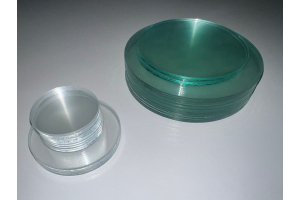
By Luca Masella, M.S.
Reading Time: 3:20 Minutes

Case Study 3: CO2 Levels and Cognitive Functions
Based on a study by Berkeley Lab scientist Mark Mendell, individuals experienced a decrease of cognitive functions by 21% while breathing a concentration of CO2 above 0.1%, and up to 94% of cognitive functions with a CO2 concentration of 0.25%.
Another study by the Harvard T.H. Chan School of Public Health found that, on average, subjects’ cognitive scores dropped a whopping 21% with a 0.04% increase in CO2.
The experiment was carried out in three buildings with individuals working for 6 consecutive days. One building with a high fresh air ventilation rate of 40 cfm (cubic feet per minute) which was called ‘Green Building (in chart below labeled Green+), the second building (labeled Green) with a low fresh air ventilation rate of 20 cfm (cubic feet per minute), and the third building using recycled air (labeled Conventional) was rigged with artificially elevated carbon dioxide (CO2).
The subjects were then tested using a method covering 9 areas of cognitive functions. The results showed a strong intercorrelation between CO2 levels and the loss of cognitive functions.
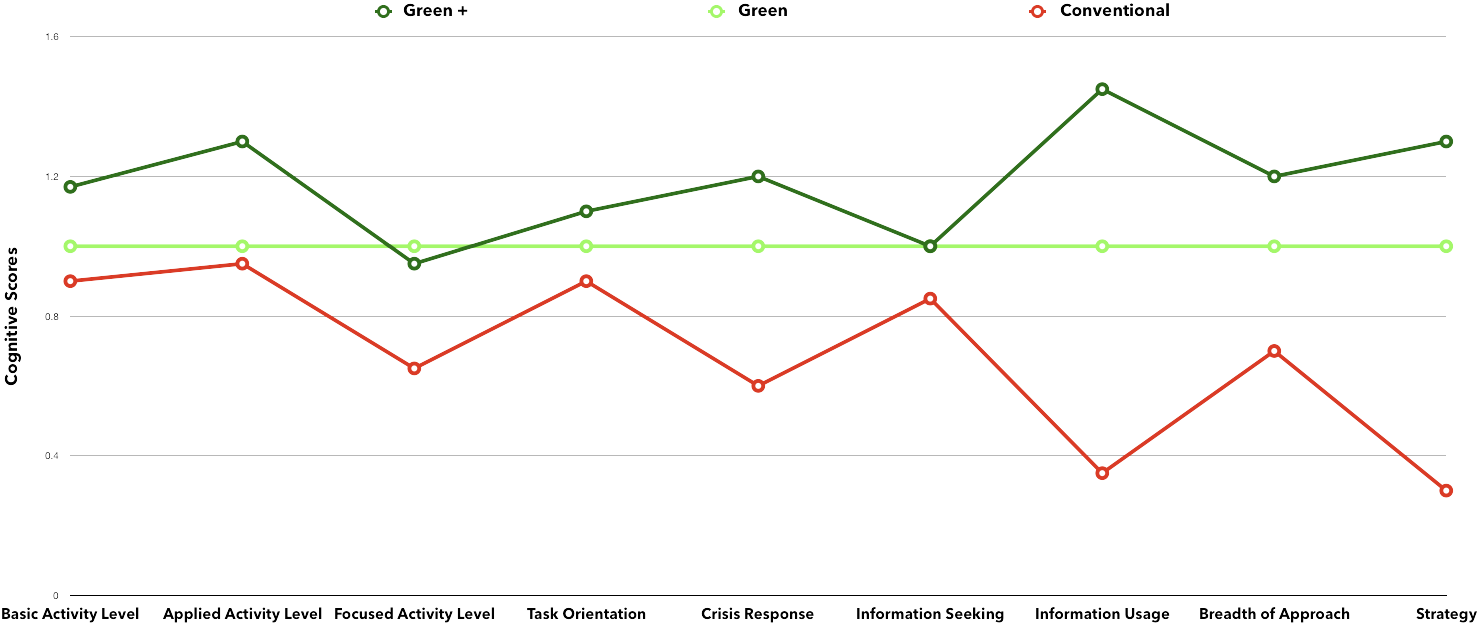
| Cognitive Function Areas | Description |
|---|---|
| Basic Activity Level | Overall ability to make decisions at all times |
| Applied Activity Level | Capacity to make decisions that are geared toward overall goals |
| Focused Activity Level | Capacity to pay attention to situations at hand |
| Task Orientation | Capacity to make specific decisions that are geared toward completion of tasks at hand |
| Crisis Response | Ability to plan, stay prepared, and strategize under emergency conditions |
| Information Seeking | Capacity to gather information as required from different available sources |
| Information Usage | Capacity to use both provided information and information that has been gathered toward attaining overall goals |
| Breadth of Approach | Capacity to make decisions along multiple dimensions and use a variety of options and opportunities to attain goals |
| Strategy | Complex thinking parameter that reflects the ability to use well-integrated solutions with the help of optimal use of information and planning |
This area of study is an important focus as we head into new levels of green building design, with low-waste energy and highly sophisticated HVAC systems.
Green building design is evolving to both optimize employee productivity and energy usage, which will require energy-efficient systems and informed operating practices to maximize benefits to human health while minimizing energy consumption.
- 0.025% - 0.035% CO2: outdoor air level.
- 0.035% - 0.1% CO2: generic concentration in occupied spaces with good air exchange.
- 0.1% - 0.2% CO2: feeling of drowsiness and tiredness.
- 0.2% - 0.5% CO2: headaches, sleepiness and stuffy air resulting in poor concentration, loss of attention, increased heart rate and nausea.
- >0.5% CO2: Unusual air conditions where high levels of other harmful gases could also be present. Toxicity or oxygen deprivation could occur. Below this level is the permissible exposure limit for daily workplace exposures.
- >40,000 ppm: Immediately harmful.
To understand how harmful CO2 is (both short and long term), below is a comparison between high CO2 levels and alcohol.
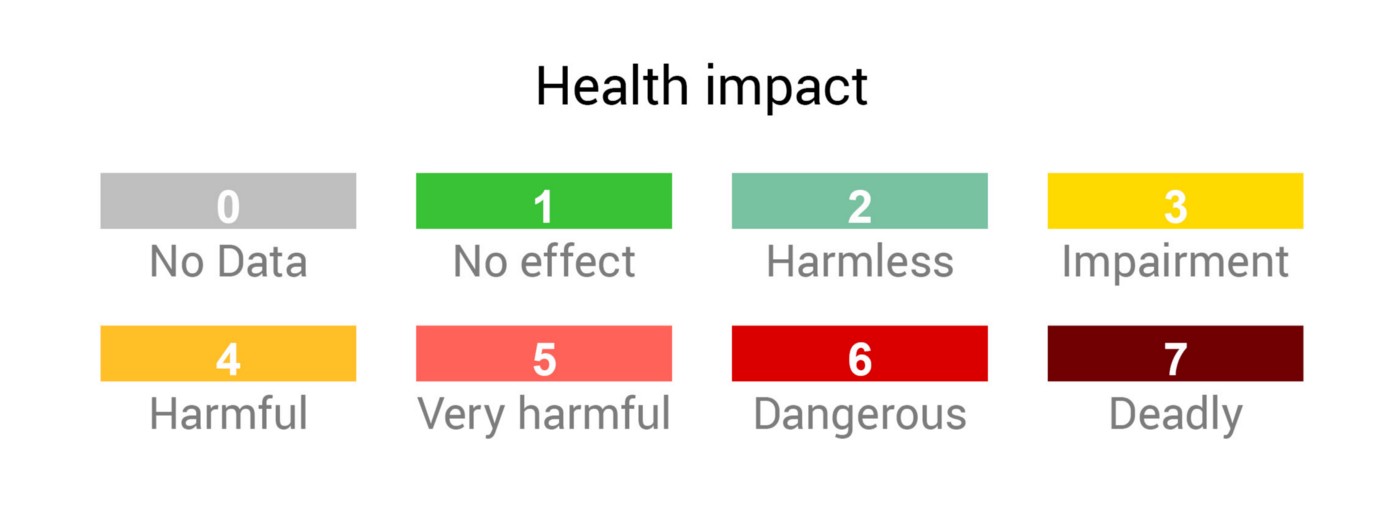
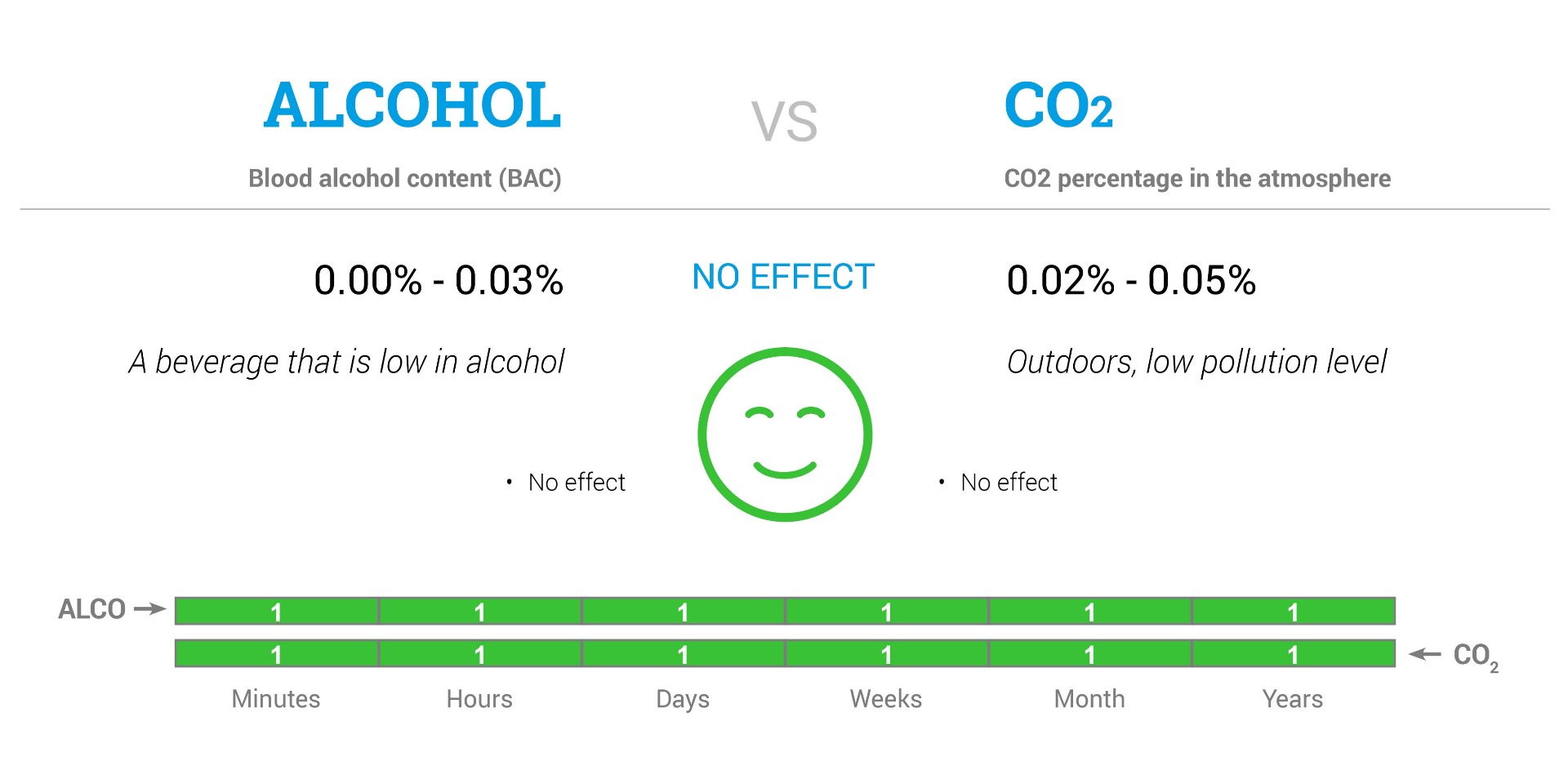
The graphic above depicts that lower levels of both CO2 and alcohol have no short or long term effect on the human body.
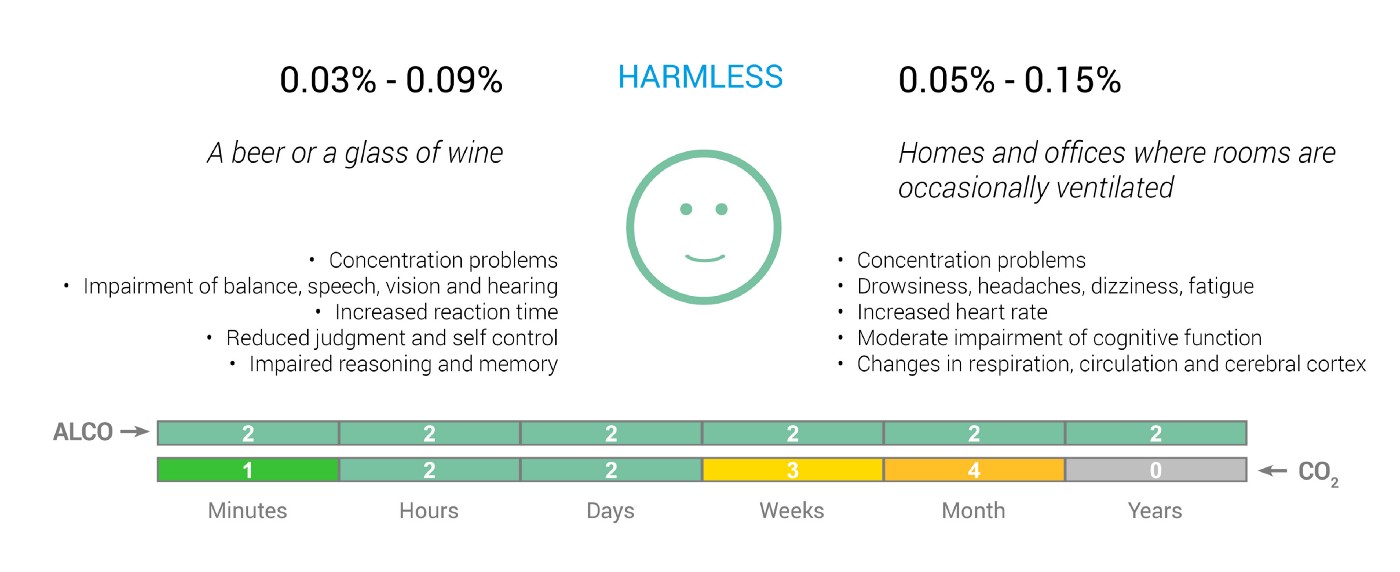
By increasing the CO2 levels it takes longer to see the effects, but the longer the exposure, the worse the effect is.
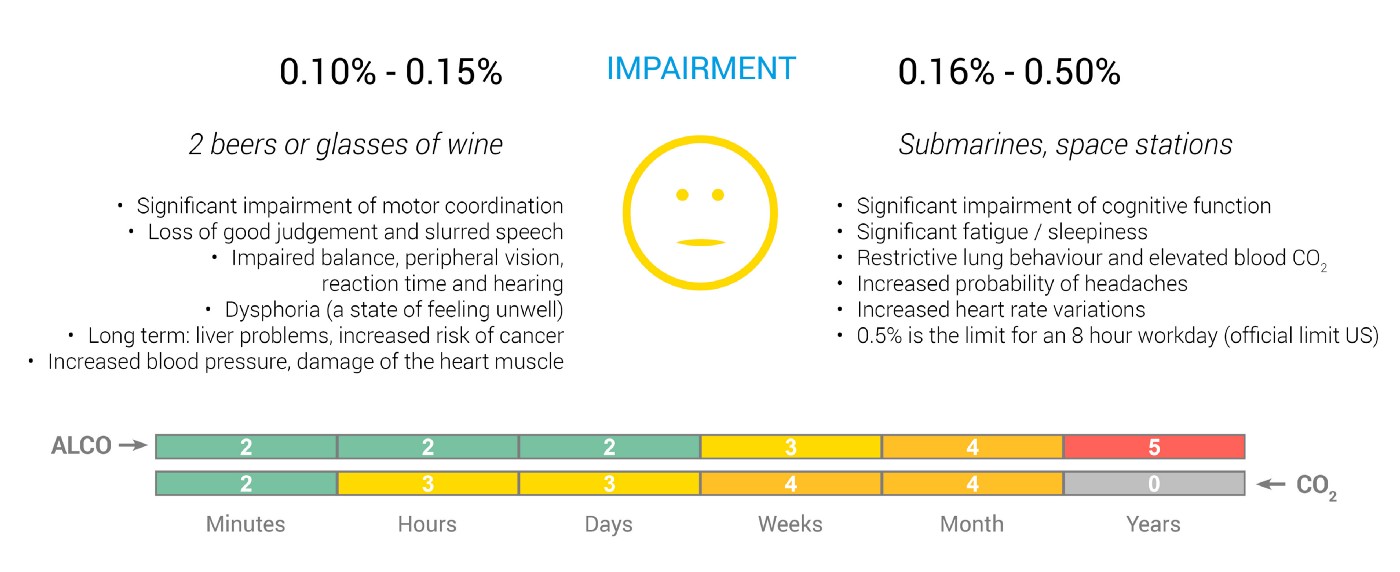
While there is a lack of long-term studies on the prolonged exposure of high levels of CO2 to the human body, there are now ongoing studies due to the recent dangerously high levels of CO2 being recorded in fresh air.
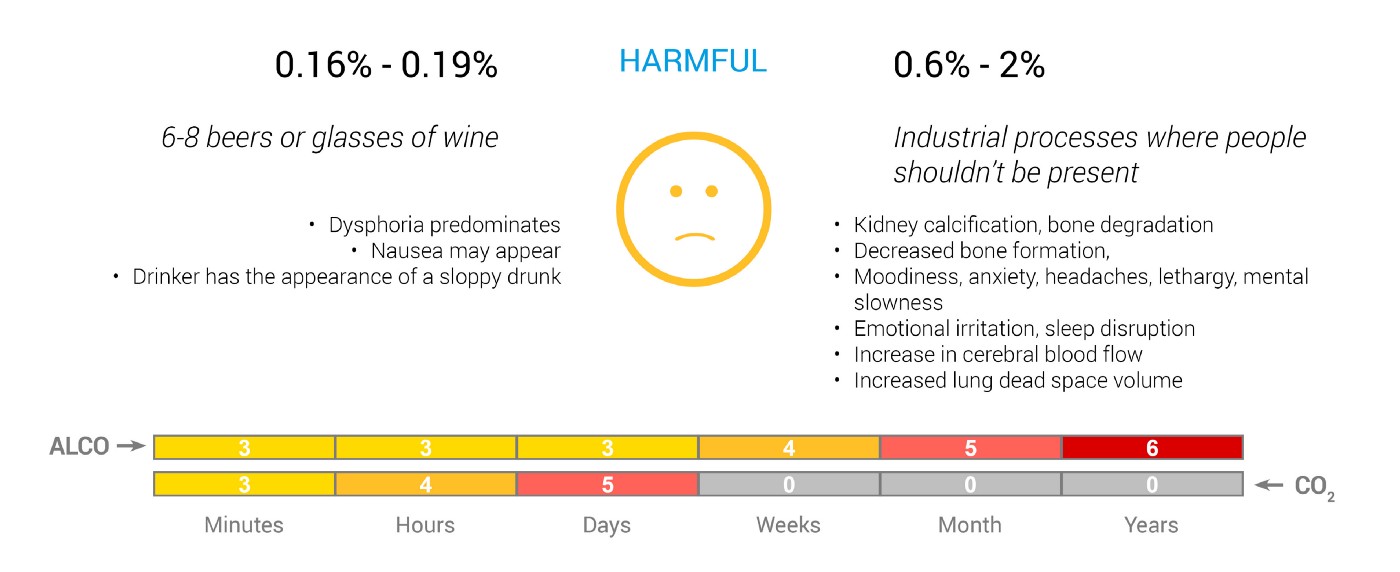
These levels of CO2 can be harmful after just a few days if exposed to for more than 15 minutes per day. Additionally, these levels of alcohol start to create issues after years of usage.
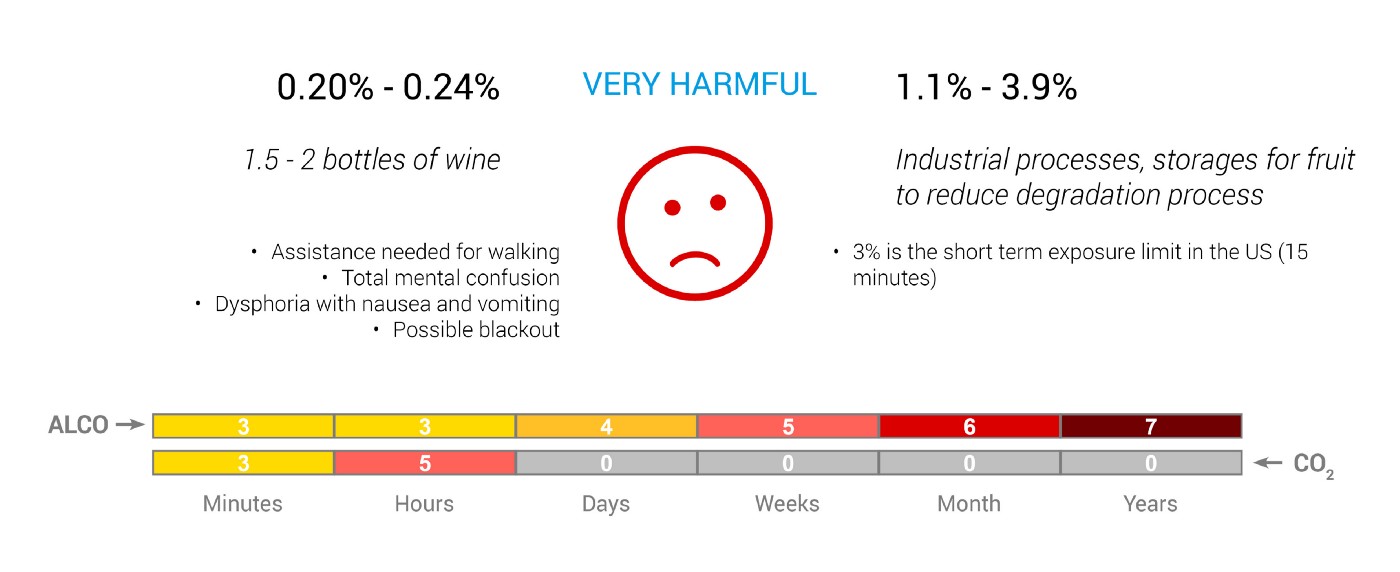
4% of CO2 results in harmful effects in just a few hours, the effects of two bottles of wine, which would be rated as a 3, while the same amount in C02 would be a 5.
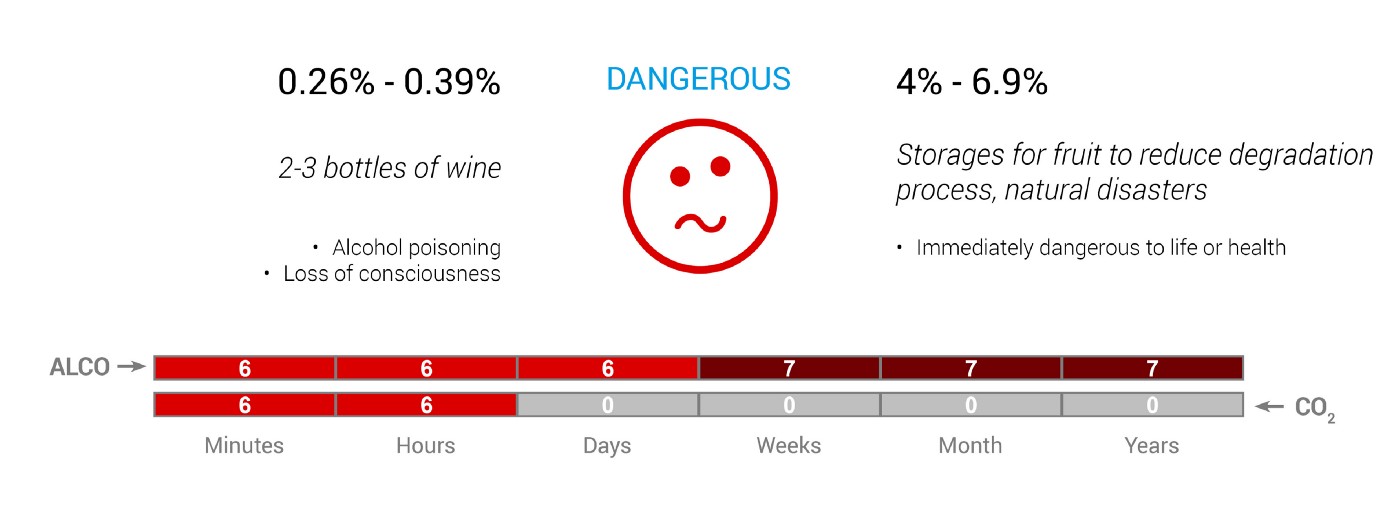
These are the levels of alcohol and CO2 that could kill a human.


